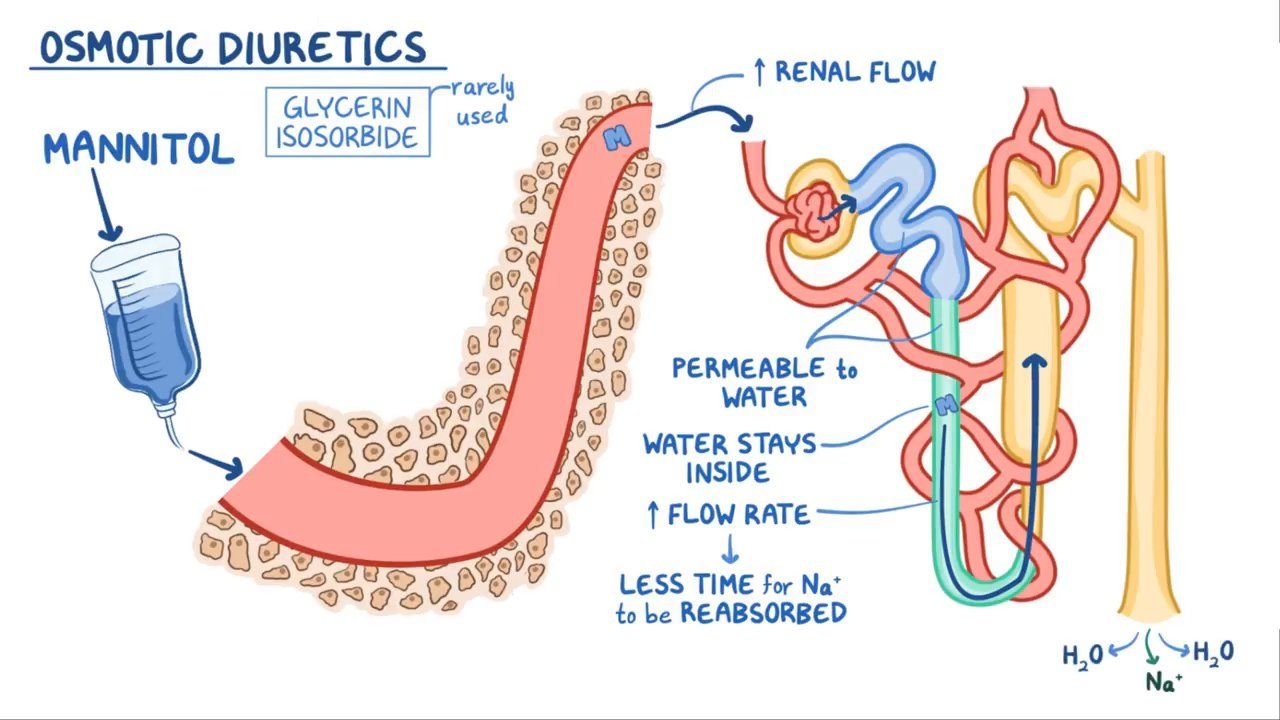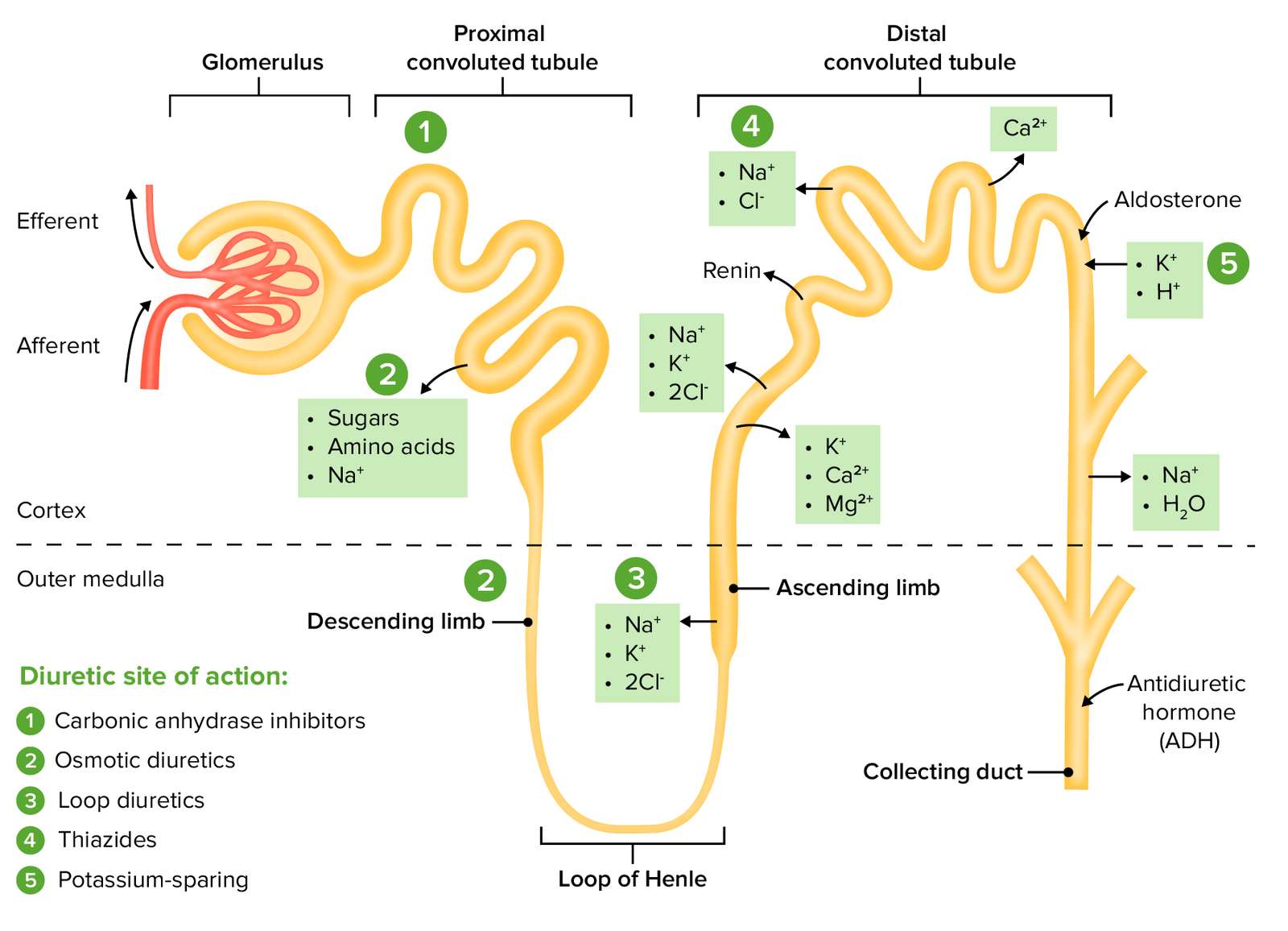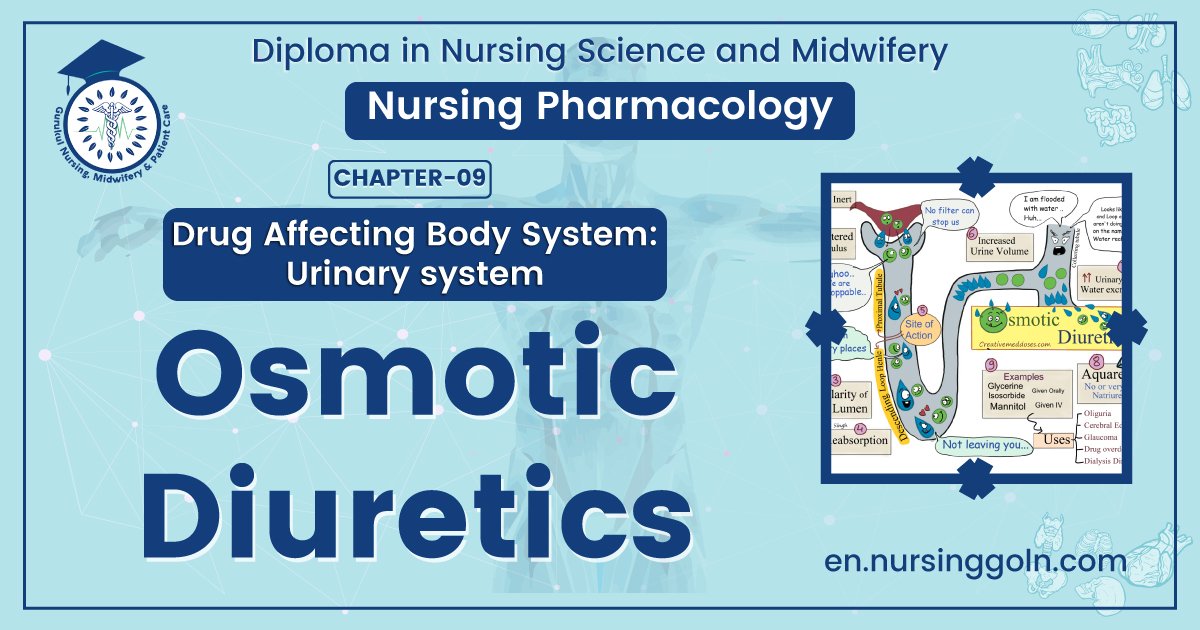Osmotic Diuretics – This book covers the entire syllabus of “Pharmacology” prescribed by BNMC- for diploma in nursing science & midwifery students. We tried to accommodate the latest information and topics. This book is an examination setup according to the teachers’ lectures and examination questions.
At the end of the book, previous questions are given. We hope in touch with the book students’ knowledge will be upgraded and flourish. The unique way of presentation may make your reading of the book a pleasurable experience.

Osmotic Diuretics
Mannitol:
Mannitol is a nonelectrolyte of low molecular weight (182) that is pharmacologically inert-can be given in large quantities sufficient to raise osmolarity of plasma and tubular fluid. It is minimally metabolized in the body; freely filtered at the glomerulus and undergoes limited reabsorption: therefore excellently suited to be used as osmotic diuretic. Mannitol appears to limit tubular water and electrolyte reabsorption in a variety of ways:
- Retains water isoosmotically in PT-dilutes luminal fluid which opposes NaCI reabsorption.
- Inhibits transport processes in the thick AscLH by an unknown mechanism. Quantitatively this appears to be the largest contributor to the diuresis.
- Expands extracellular fluid volume (because it does not enter cells, mannitol draws water from the intracellular compartment) increases G.F.R. and inhibits renin release.
- Increases renal blood flow, especially to the medulla medullary hypertonicity is reduced (due to washing off) corticomedullary osmotic gradient is dissipated-passive salt reabsorption is reduced.

Uses
Mannitol is never used for the treatment of chronic edema or as a natriuretic. Its indications are:
- Increased intracranial or intraocular tension (acute congestive glaucoma, head injury, stroke, etc.): by osmotic action it encourages movement of water from brain parenchyma, CSF and aqueous humour
- To maintain GFR and urine flow in impending acute renal failure, e.g. in shock, severe trauma, cardiac surgery, haemolytic reactions: 500-1000 ml of the solution may be infused over 24
- To counteract low osmolality of plasma/e.c.f. due to rapid haemodialysis or peritoneal dialysis.

Read more:
